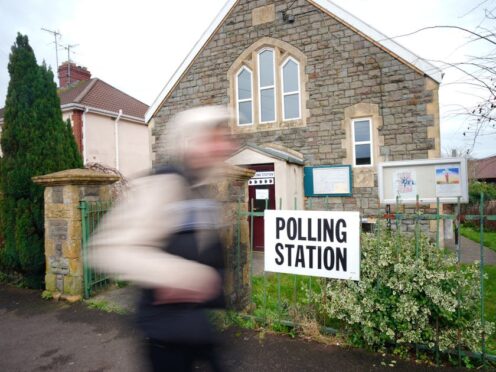Suburban women over 60 who voted Conservative in 2019 could prove decisive at the general election, a think tank has said.
Polling published on Friday by the think tank More In Common suggested the coalition of voters that gave Boris Johnson a majority in 2019 has now fragmented, leaving the Conservatives struggling to improve their support in the country.
While several voters appear to have switched directly from the Conservatives to Labour, and others have opted for Reform UK, a larger proportion currently say they do not know how they will vote.

Of this group, which makes up around 6% of voters, most are female, older than average and likely to live in towns or suburbs, with More In Common’s UK director Luke Tryl giving Whitby, in Yorkshire, as an example.
Mr Tryl said: “Whilst winning back this group won’t be enough to keep the Conservatives in power… they will determine the size of any likely Labour victory, from a hung Parliament to a landslide.”
More In Common’s analysis, based on polling of more than 3,000 British adults in the last week of January, also suggests that the next election will be based on policy rather than personality, with neither of the two main party leaders proving a draw for voters.
Mr Tryl said: “As this in-depth analysis suggests, the parties’ fortunes are likely to be shaped by a series of factors that sit underneath headline voting intention.
“That includes the dominance of the cost of living, the rising salience of crime, what the unusually large number of undecided female voters who voted Tory in 2019, ultimately decide to do and to what extent third-party voters for the Greens, Liberal Democrats or Reform UK decide to vote tactically.”
The cost of living remains a key concern, listed as the number one issue by every voter group despite the fall in inflation over the past year, while concerns about crime and the NHS were particularly prevalent with swing voters.
Mr Tryl also warned that the Conservatives were unlikely to win back swing voters with a platform of tax cuts and “culture war issues”.
He said those who had switched to supporting Labour were more likely to want investment in public services than tax cuts, while subjects such as gender identity and leaving the European Convention on Human Rights were of only “minority appeal”.
One possible tax cut that did prove popular, however, was a reduction in council tax, with 43% of undecided former Conservative voters supporting a reduction in the levy, compared to 29% saying the same about income tax.
Mr Tryl also suggested it was unlikely that the Conservatives would be able to peel large numbers of supporters away from Reform UK, with only a quarter saying they would consider backing the Government if Reform stood down and many “anti-system” voters saying they would either stay at home or cast another protest vote if Richard Tice’s party were not an option.
But the analysis was not universally positive for Labour, either, with Mr Tryl noting that the party’s pledge to invest £28 billion a year in green projects had been its second most popular proposal behind scrapping tax breaks for non-doms.
He said: “Labour risks reinforcing the charge they are more of the same by having ditched one of their most popular policies with their likely voters.”
Polling suggested that while a quarter of those switching from the Conservatives to Labour said they had no hesitation about voting for Sir Keir Starmer’s party, some 20% said they were still concerned Labour would be no better at handling the cost of living crisis.
Mr Tryl also warned that the main “glue” holding the coalition of potential Labour voters together was a desire to get the Conservatives out of office, which could cause problems for any future Labour government.
He said: “Given the breadth of the Labour coalition, I struggle to see the glue that keeps them together when things get hard in government.”
